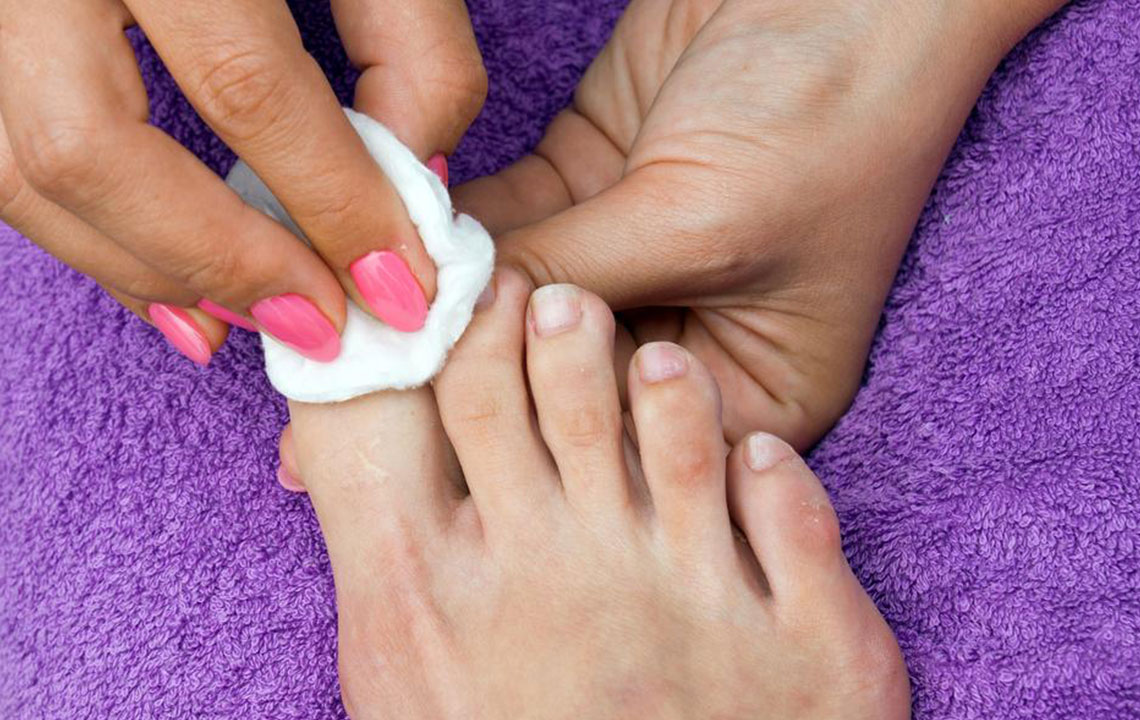Effective Ways to Treat Fingernail Fungus
Fungal infection of a fingernail is known as onychomycosis or tinea unguis. This condition affects both the fingernails as well as the toenails. It occurs in adults, is more common among women than in men, and is one of the most common nail diseases. The fungal infection is caused by a fungus known as a dermatophyte. People are generally under the misconception that fingernail fungus treatment is very innocent because it is just a surface infection. The reality is that nails are impenetrable, so topical treatments take a lot of time to show results.
The fungus can attack the nails or the nail bed through small cuts in the skin around the nail or through the gap between the nail and the nail bed.

Common causes of fingernail fungus
Fingernail fungus usually thrives in moist and warm conditions. Using swimming pools, at a gym or going to a nail spa, which does not have adequately sanitized instruments, can lead to nail fungus. Not taking proper care of fingernails and not maintaining proper hygiene also result in fingernail fungus.
Types of fingernail fungus
There are different types of fingernail fungus with respect to the way in which the fungus manifests and accordingly, the fingernail fungus treatment also varies.
- Distal subungual onychomycosis is a type of fungus infection, which starts from the ends of the nail and raises the nail up. The nails become thickened and flaky. Debris gets collected under the nails.
- The second type of fungal infection is the one which starts from the base of the fingernail at the cuticle and goes to the nail tip, thereby raising the nail up. This is called proximal subungual onychomycosis.
- The third type is called the yeast onychomycosis, which is caused by a yeast called Candida. It causes yellow, brown, white, or thickened nails.
- The white superficial onychomycosis is the fourth type in which a white powder can be scraped off the surface of the nail.
Treatment of fingernail fungus
Fingernail fungus treatment can start only after the cause of the infection is diagnosed. Laboratory testing helps in diagnosing the cause. A nail clipping is taken as a sample and it is tested to identify the presence of the fungus. Fingernail fungus treatment may include the use of antifungal creams, which have to be applied to the affected area regularly.
Oral medications are prescribed by the doctor, can also be taken to kill the infection. These medications penetrate the nail and the nail bed and effectively kill the germs or fungus and stay on in the nail bed for a long time, even after the therapy is over. This gives prolonged protection.
Fingernail fungus treatment can be done at home in the following ways:
- Fingernails can be soaked in a bowl of warm water infused with vinegar or an equal combination of vinegar and Listerine. Vinegar is acidic and antifungal kills the fungus. Listerine has antiseptic properties as well as fungicidal properties, which kill germs and reduce pain and swelling.
- Antibacterial properties of tea tree oil can help in treating fingernail fungus when it is applied topically on the nail.
- A few drops of hydrogen peroxide can be added to warm water and a cotton ball can be dipped into it. This cotton ball should be pressed directly onto the affected area to clear the fungus.
- Epsom salt should be poured on the fingernails when they are soaked in warm water. The magnesium present in Epsom salt exfoliates the infected skin and speeds up the recovery process.
- Coconut oil has fatty acids, which insert themselves into a layer of fungus and disturb its cell integration. Thus the fungus gets destroyed. For this, coconut oil needs to be applied to the nail and massaged gently.
- Lemon juice is acidic, antifungal and antiseptic. Apply the juice to the infected nail and leave it for half an hour. After this, rinse it off with warm water and wipe it dry.
These are some effective home remedies for fingernail fungus treatment. You just need to be patient and try out some of these methods to get rid of the infection.

